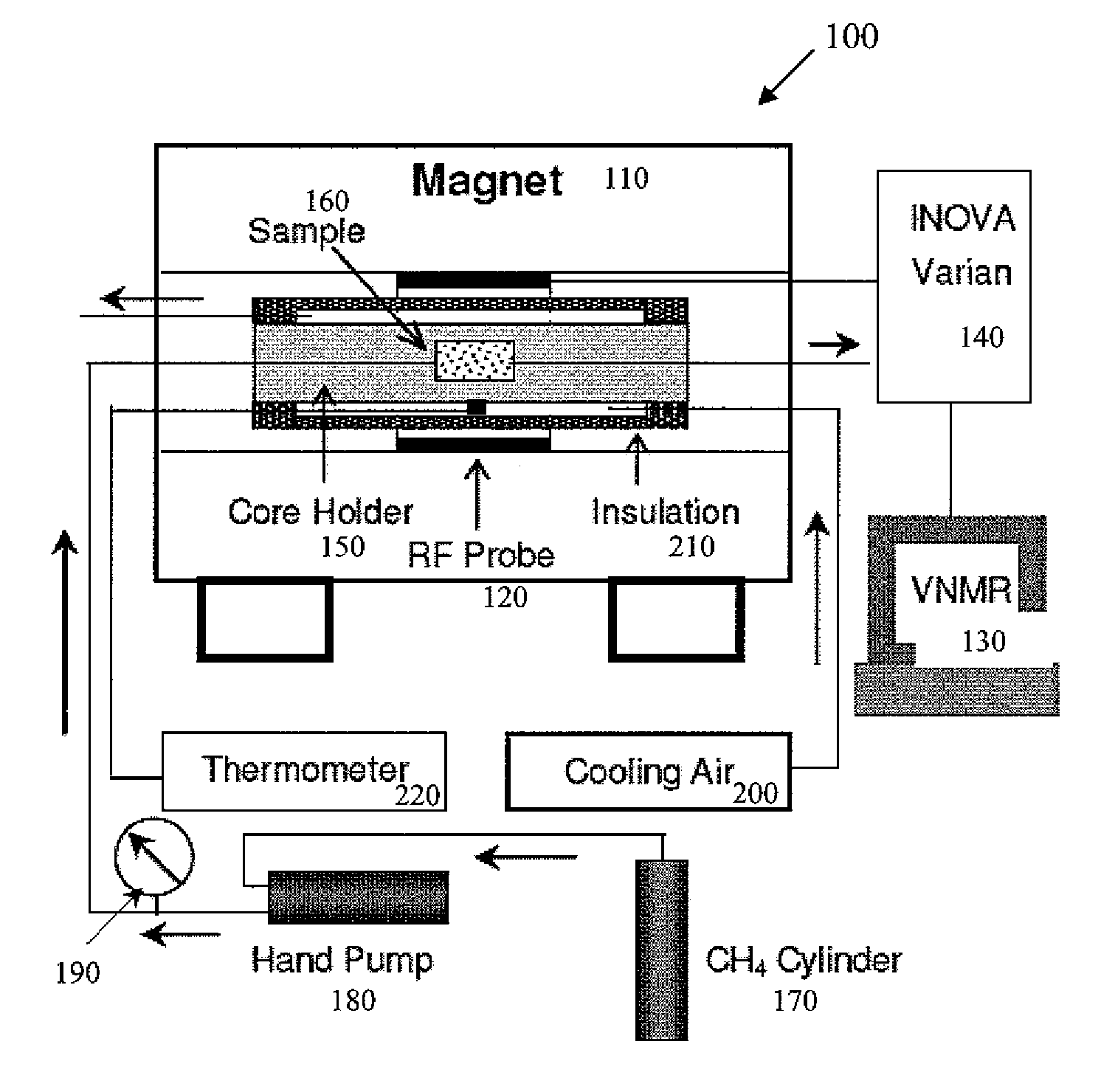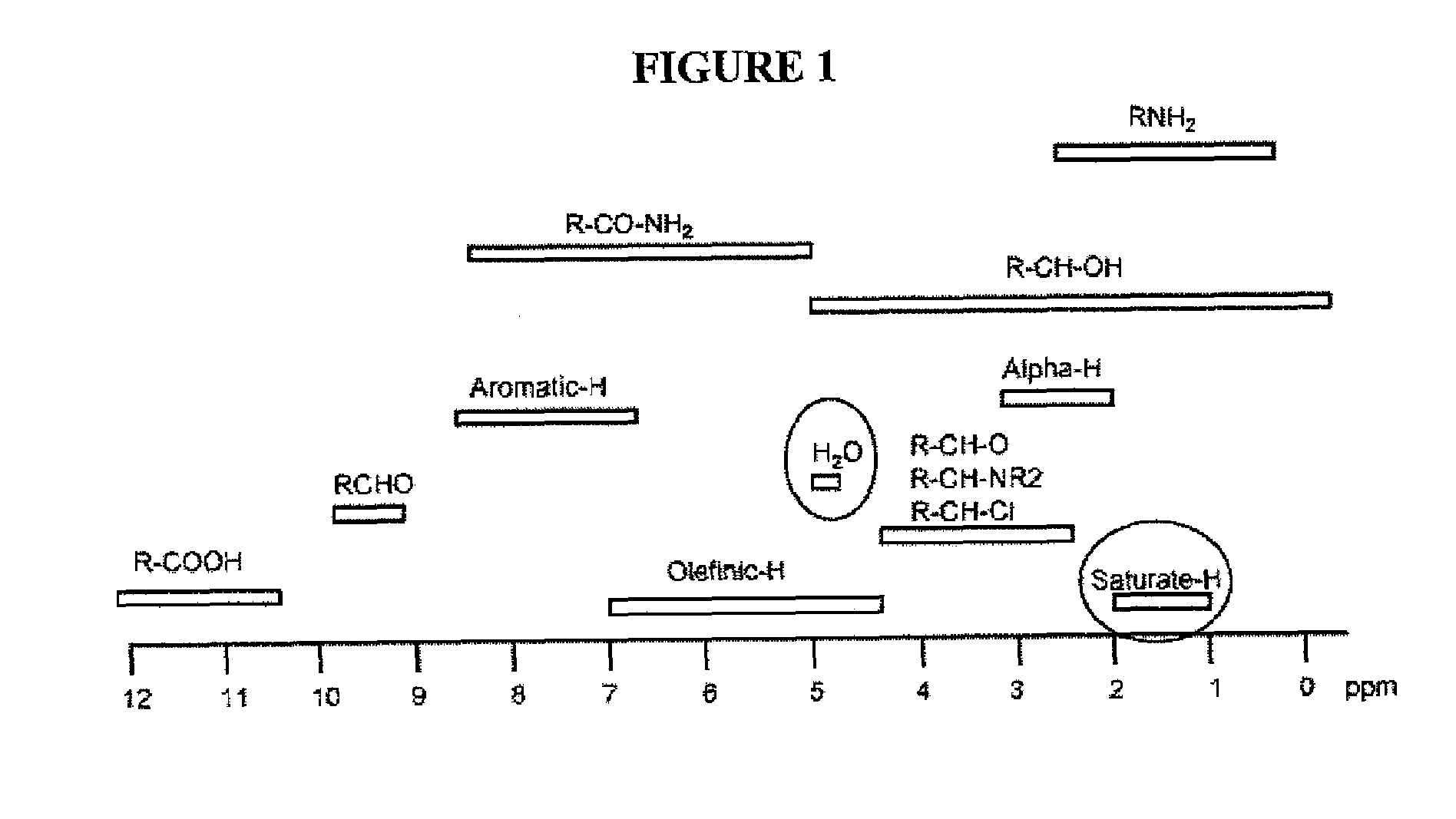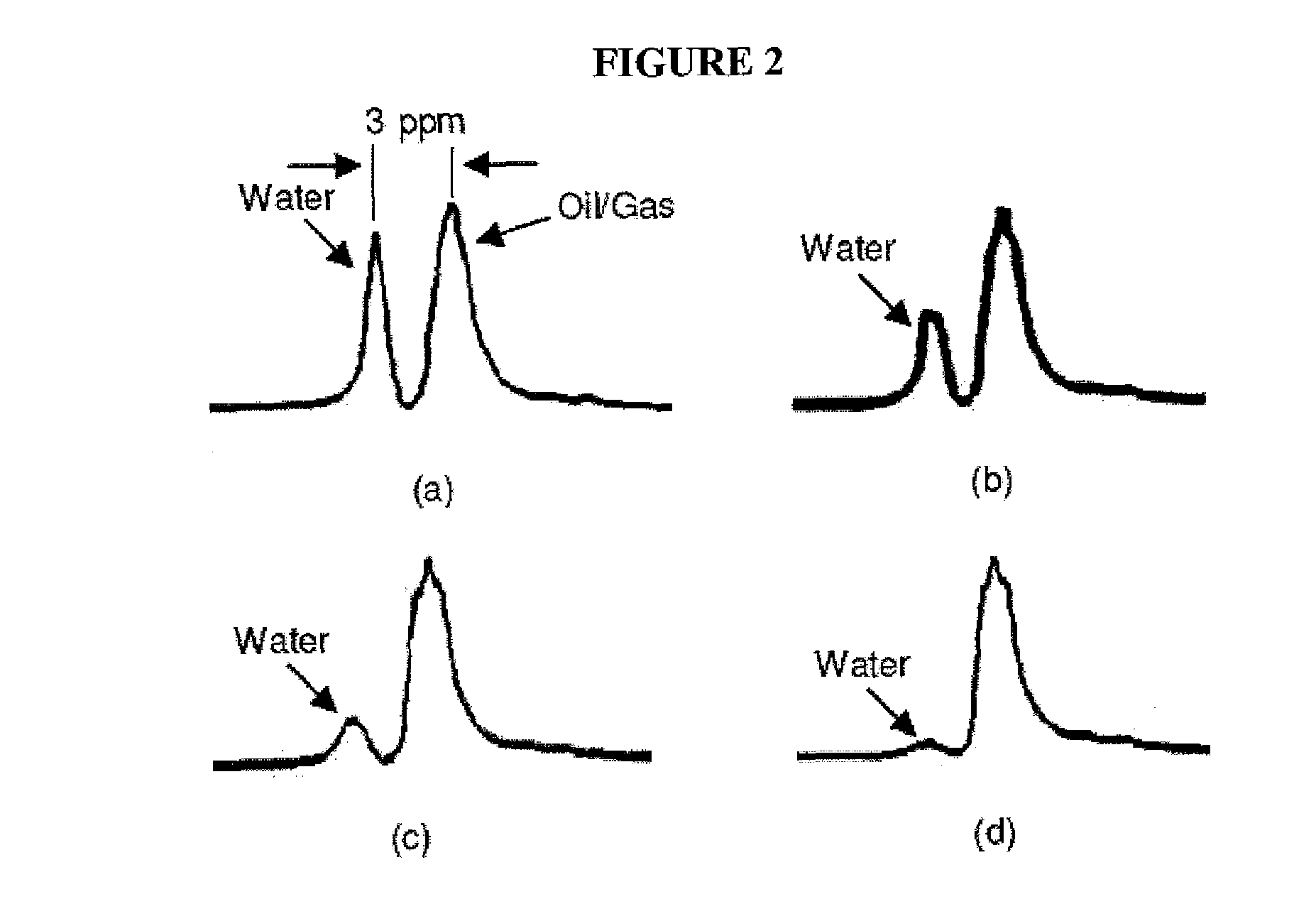Nmr method of detecting precipitants in a hydrocarbon stream
a precipitant detection and hydrocarbon technology, applied in the direction of measurement using nmr, instruments, nuclear magnetic resonance analysis, etc., can solve problems such as flow assurance, serious safety issues, and deep-water flow assurance problems
- Summary
- Abstract
- Description
- Claims
- Application Information
AI Technical Summary
Benefits of technology
Problems solved by technology
Method used
Image
Examples
example 1
Gas Hydrate Behavior in Black Oil
[0056]Experiments were performed to study the gas hydrate behavior in black oil. The experimental scheme to detect the presence of precipitants with NMR spectroscopy 100 is depicted in FIG. 3. The magnet 110 for the NMR measurements is an 85 MHz Oxford horizontal 32 cm wide bore NMR with imaging capability. The probe 120 is a LITZ RF volume coil (with 14 cm internal diameter) from Doty Scientific, Inc. NMR data were acquired and processed using Varian VNMR software 130 and INOVA hardware system 140.
[0057]Black oil (Baker Petrolite) and pure water (Aldrich Chemical Company, Inc) were mixed at 1:1 volume ratio to make a stable water-in-oil emulsion by manual shaking. The 16 ml water-in-oil emulsion sample was contained in a Teflon® bottle. The sample 160 was placed in a core holder 150 from Temco Inc, made of strong non-metal composite material and specially designed for NMR experiments. Core holder 150 is capable of handling pressures up to 2500 psi. ...
example 2
THF Relaxometry
[0065]The system of THF and water, that form structure II hydrate at 4.5° C. under ambient pressure, was selected to study clathrate hydrate mechanisms because formation conditions are mild and THF is miscible with water at conditions of interest. Hydrate formation and dissociation were studied by measuring T2 of THF in D2O. Low-field NMR spin-spin relaxation time (T2) distributions were employed to investigate THF clathrate hydrate formation and dissociation in deuterium oxide (D2O). It was found that T2 measurements easily distinguish THF in a solid hydrate phase from THF in the coexisting liquid phase.
[0066]A schematic of an experimental setup to detect the presence of precipitant with NMR relaxometry 300 is shown in FIG. 5. T2 distribution measurements of the protons in THF (Aldrich, 99+%) in D2O (Cambridge Isotope Laboratories, D 99.9%) were obtained with a 2 MHz RI Maran NMR spectrometer 310 using Carr-Purcell-Mieboom-Gill (CPMG) technique as known to those of s...
example 3
Asphaltene and Paraffin Relaxometry
[0071]Asphaltene agglomeration and flocculation were studied by measuring the T2 distributions of black oils subjected to CO2 injection at low pressures. Low-field NMR spin-spin relaxation time (T2) distributions were employed to investigate the change in the T2 distribution as a function of the exposure time of the oil to CO2. T2 measurements clearly demonstrated the agglomeration of large molecular species in black oil as a result of CO2 exposure.
[0072]A schematic of the experimental setup 300 used to perform T2 distribution measurements of the protons in black oil is shown in FIG. 5. T2 distribution measurements were obtained with a 2 MHz RI Maran NMR spectrometer 310 using Carr-Purcell-Mieboom-Gill (CPMG) technique as known to those of skill in the art. The instrument has a dead time of 60 μs. In the CPMG pulse sequence, the 90-180 degree pulse gap is 166.7 μs. Data were acquired by RiNMR software 330 and processed using WinDXP program. The tem...
PUM
 Login to View More
Login to View More Abstract
Description
Claims
Application Information
 Login to View More
Login to View More - R&D
- Intellectual Property
- Life Sciences
- Materials
- Tech Scout
- Unparalleled Data Quality
- Higher Quality Content
- 60% Fewer Hallucinations
Browse by: Latest US Patents, China's latest patents, Technical Efficacy Thesaurus, Application Domain, Technology Topic, Popular Technical Reports.
© 2025 PatSnap. All rights reserved.Legal|Privacy policy|Modern Slavery Act Transparency Statement|Sitemap|About US| Contact US: help@patsnap.com



